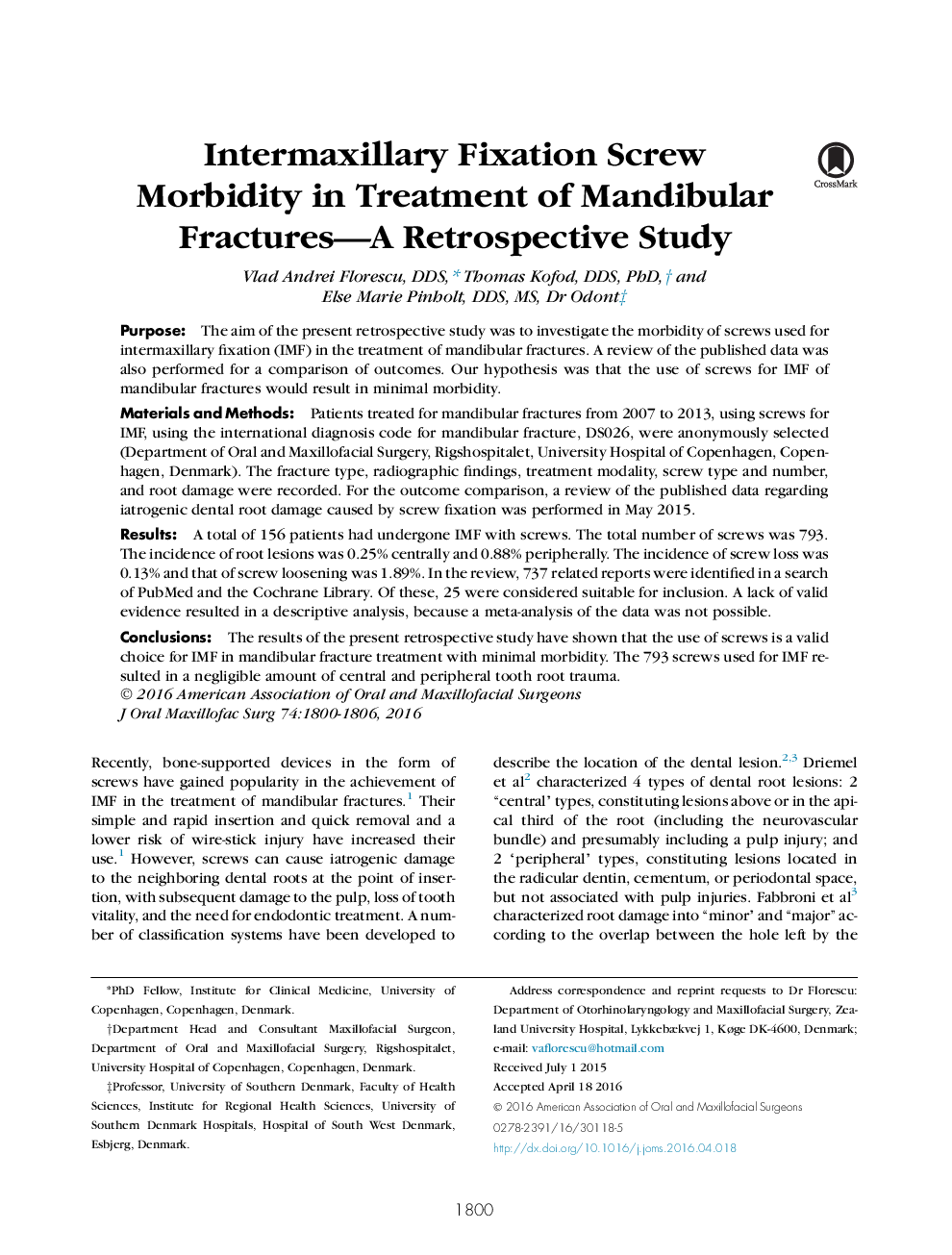| Article ID | Journal | Published Year | Pages | File Type |
|---|---|---|---|---|
| 3152515 | Journal of Oral and Maxillofacial Surgery | 2016 | 7 Pages |
PurposeThe aim of the present retrospective study was to investigate the morbidity of screws used for intermaxillary fixation (IMF) in the treatment of mandibular fractures. A review of the published data was also performed for a comparison of outcomes. Our hypothesis was that the use of screws for IMF of mandibular fractures would result in minimal morbidity.Materials and MethodsPatients treated for mandibular fractures from 2007 to 2013, using screws for IMF, using the international diagnosis code for mandibular fracture, DS026, were anonymously selected (Department of Oral and Maxillofacial Surgery, Rigshospitalet, University Hospital of Copenhagen, Copenhagen, Denmark). The fracture type, radiographic findings, treatment modality, screw type and number, and root damage were recorded. For the outcome comparison, a review of the published data regarding iatrogenic dental root damage caused by screw fixation was performed in May 2015.ResultsA total of 156 patients had undergone IMF with screws. The total number of screws was 793. The incidence of root lesions was 0.25% centrally and 0.88% peripherally. The incidence of screw loss was 0.13% and that of screw loosening was 1.89%. In the review, 737 related reports were identified in a search of PubMed and the Cochrane Library. Of these, 25 were considered suitable for inclusion. A lack of valid evidence resulted in a descriptive analysis, because a meta-analysis of the data was not possible.ConclusionsThe results of the present retrospective study have shown that the use of screws is a valid choice for IMF in mandibular fracture treatment with minimal morbidity. The 793 screws used for IMF resulted in a negligible amount of central and peripheral tooth root trauma.
